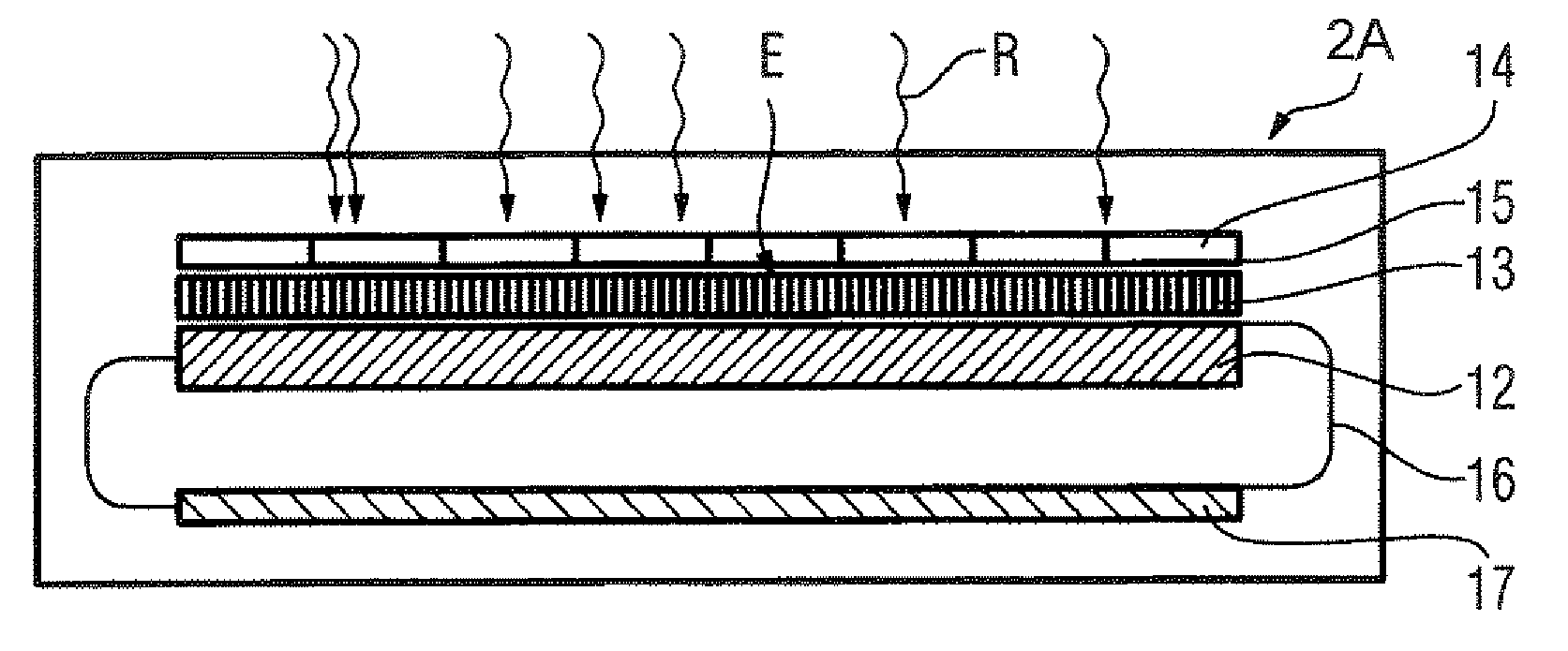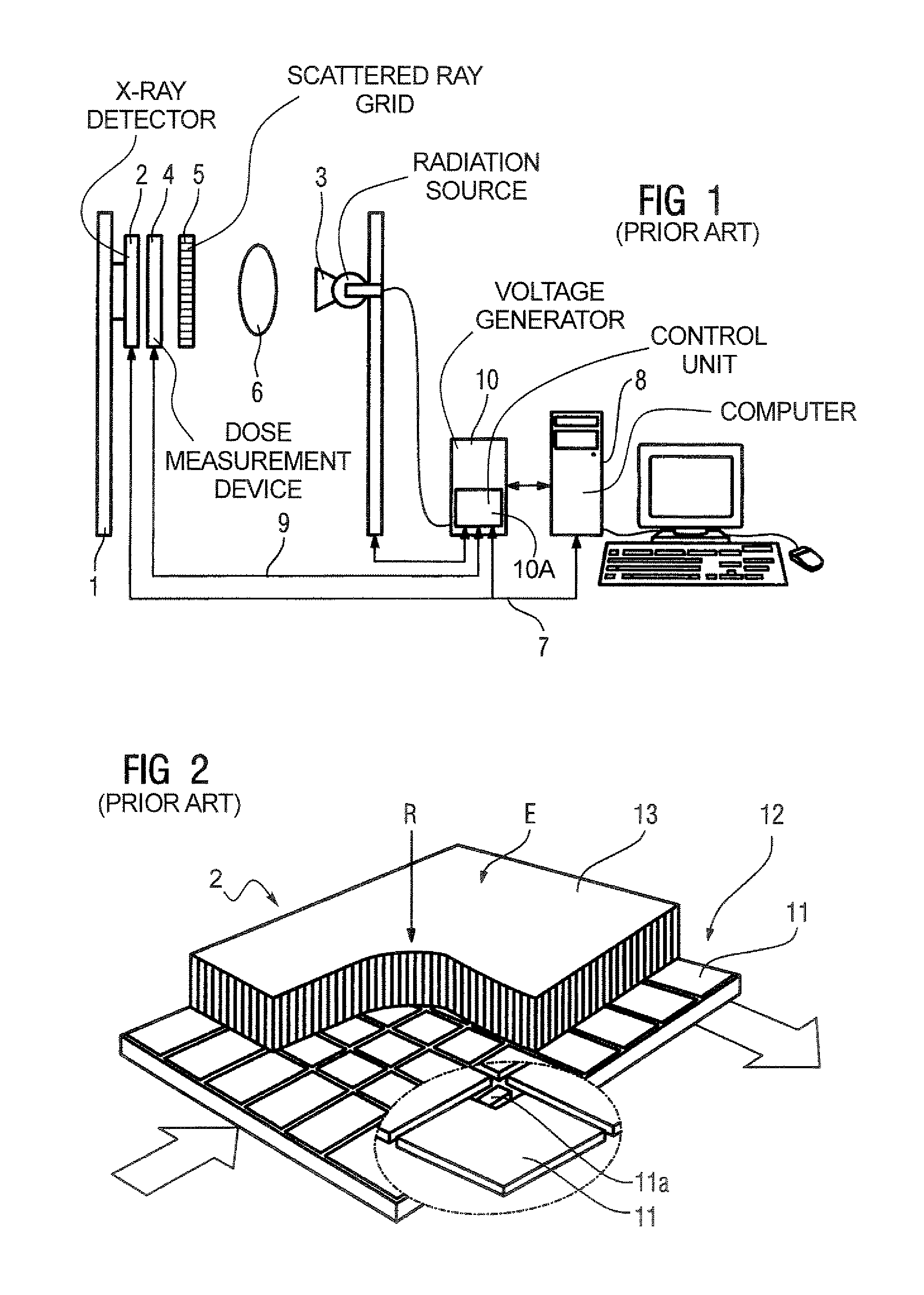X-ray detector
a detector and x-ray technology, applied in the field of x-ray detectors, can solve the problems of image errors, unwanted artifacts in the implementation of such corrections, and inability to achieve the effect of simple and cost-effectiv
- Summary
- Abstract
- Description
- Claims
- Application Information
AI Technical Summary
Benefits of technology
Problems solved by technology
Method used
Image
Examples
first embodiment
[0024]FIG. 3 shows a schematic cross-section view of an inventive x-ray detector 2A. The luminophore layer 13 is located on the photodiode array 12 produced, for example, from amorphous silicon. A further photodiode array 15 formed from a number of further photodiodes 14 is located on the incident surface E of the luminophore layer 13. The photodiode array 12 is connected by means of a connection line 16 with an electronic evaluation circuit 17. The light-sensitive surface of each further photodiode 14 faces the photodiode array 12.
second embodiment
[0025]In the inventive x-ray detector 2B shown in FIG. 4, a layer 18 that is semi-transparent for light is disposed on the incident surface E of the luminophore layer 13. The further photodiode array 15 is located on the semi-transparent layer 18.
[0026]FIG. 5 shows a plan view of a section of the further photodiode array 15. A switch 19 is associated with each of the further photodiodes 14. It is thereby possible to read out line-by-line the charges measured with the further photodiodes 14. The charges read out can be integrated with a suitable integration device. The radiation dose rate can be determined from the integrated measurement values with spatial resolution.
[0027]FIG. 6 shows a plan view of the further photodiode array 15. To determine a radiation dose rate, it is, for example, possible to select a predetermined region B that is formed from a number of the further photodiodes 14 for use in determining the dose rate.
[0028]The further photodiodes 14 are appropriately produce...
PUM
 Login to View More
Login to View More Abstract
Description
Claims
Application Information
 Login to View More
Login to View More - R&D
- Intellectual Property
- Life Sciences
- Materials
- Tech Scout
- Unparalleled Data Quality
- Higher Quality Content
- 60% Fewer Hallucinations
Browse by: Latest US Patents, China's latest patents, Technical Efficacy Thesaurus, Application Domain, Technology Topic, Popular Technical Reports.
© 2025 PatSnap. All rights reserved.Legal|Privacy policy|Modern Slavery Act Transparency Statement|Sitemap|About US| Contact US: help@patsnap.com



